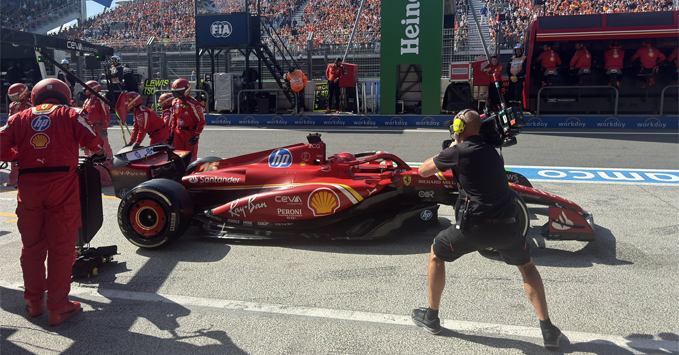The countdown to the revealing of Ferrari’s new SF-25 on Wednesday, February 19, has formally began. Ferrari crew boss Frederic Vasseur had already confirmed the insights gathered by the Italian web site AutoRacer.it in the course of the growth of venture 677: “Within the fourth yr of this technical cycle, we have now a wealth of information at our disposal, and the 2025 automotive can be totally new.” The French Crew Principal additionally disclosed {that a} mere 1% of the 2024 automotive could be carried over to the SF-25. This can be a blunt means of indicating that the 2025 automotive’s growth is akin to ranging from scratch, drawing totally on the in depth information amassed over the previous three seasons. This message was additionally clearly conveyed by Frederic Vasseur to the technical crew. The workers, headed by Loic Serra, Ferrari’s new Technical Director, Diego Tondi, answerable for the aerodynamic division, and Fabio Montecchi, the Chief Mission Engineer, has launched daring selections aimed toward making the 2025 season not only a transitional yr however a major step ahead earlier than the main modifications anticipated in 2026.
The SF-25 introduces substantial modifications on the outside, whereas the inside stays much less revolutionary: targeted changes to cooling methods are deliberate, however the extremely environment friendly triangular airbox is prone to keep. The SF-24 was already a automobile that marked a serious departure from Ferrari’s earlier designs, with aerodynamics considerably revamped following the problems confronted by the previous 2023 automotive. Based on educated technical sources, “these rules nonetheless have untapped potential,” which means there’s nonetheless appreciable room for enchancment. Whereas this course of is undoubtedly difficult, there’s a consensus that when the proper path is recognized, vital positive factors can observe. Ferrari’s technique revolves round aggressively adopting the entrance pull-rod, not simply to beat the intense limitations that the SF-24 endured all through the season, significantly concerning tire administration. The redistribution of mass, nevertheless, is something however easy and would require time and cautious studying to totally optimize the automotive’s setup.
In distinction to this, the rear part of the SF-25 has not undergone a drastic reconfiguration of its inner mechanics, however fairly a extra refined and exact evolution in keeping with the crew’s goals. Equally, the automotive’s central construction has not skilled a whole overhaul. Whereas different groups, resembling Williams (and others), have opted to redistribute the automotive’s mass, with the FW47 notably eliminating the big central radiator situated behind the airscoop, Ferrari has chosen to not undertake such a heavy redistribution of cooling parts. As a substitute, the crew has targeted on additional optimizing the prevailing cooling setup. This determination maintains the automotive’s authentic character whereas permitting changes that accommodate different modifications, such because the modifications made to the chassis that have an effect on the cooling system structure.
There is no such thing as a drastic transformation akin to Red Bull’s 2024 overhaul, which included an in depth redistribution of radiators throughout the RB20, a transfer that, though it posed challenges for the Milton Keynes crew, in the end helped remedy cooling points, as evidenced by the changes made in the course of the Suzuka race. Ferrari, nevertheless, opted to not take this dangerous method. As a substitute, they selected to retain a well-known weight distribution within the central a part of the automotive, staying near the configurations of earlier Ferrari fashions.
As for the SF-25, the 1% of carryover components from the 2024 Method 1 automotive, the SF24, as talked about by Frederic Vasseur, will embody, amongst different issues, the hood consumption, which is able to keep its triangular form, mirroring the design of the roll hoop. This function has been part of Ferrari’s design philosophy because the F1-75 in 2022 (and even earlier with the SF-90) and is a part of the crew’s need to keep away from transferring in the direction of extra central cooling methods, often known as centerline cooling. The distinctive “ears” hooked up to the edges of the airbox will even stay current on the whole fleet of Ferrari-powered vehicles by 2024. Even Ferrari’s buyer groups, Sauber and Haas, have opted to centralize their automotive’s mass by shifting not solely the oil radiator to the middle but in addition repositioning the electrical radiator alongside the automotive’s central axis. This enables for higher utilization of area, significantly within the sidepod areas.
